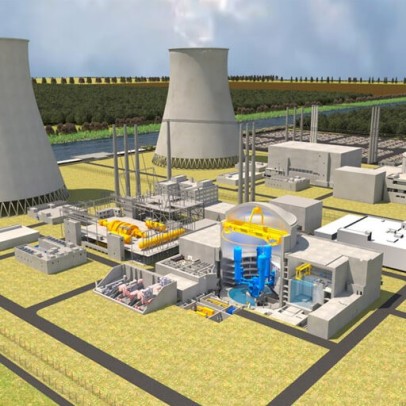 At the request of the French Government, the Autorité de Sûreté Nucléaire (ASN – Nuclear Safety Authority) has issued an opinion on the safety of EDF’s EPR 1200 pressurised water reactor project. EDF is developing the EPR1200, mainly for export, in respond to calls for tenders for medium-power reactors, in particular one issued in March 2022 by the Czech power company ČEZ. ASN's opinion on these safety options for this reactor is broadly similar to its opinion given in July 2019 on the EPR2 reactor, from which it is derived.
At the request of the French Government, the Autorité de Sûreté Nucléaire (ASN – Nuclear Safety Authority) has issued an opinion on the safety of EDF’s EPR 1200 pressurised water reactor project. EDF is developing the EPR1200, mainly for export, in respond to calls for tenders for medium-power reactors, in particular one issued in March 2022 by the Czech power company ČEZ. ASN's opinion on these safety options for this reactor is broadly similar to its opinion given in July 2019 on the EPR2 reactor, from which it is derived.
The main differences relate to the power level (1,200 MWe instead of 1,650 MWe), and the number of steam generators (three instead of four). ASN notes that the safety objectives, the reference systems used for the design and the architecture of the safety systems are taken from the EPR2 model including adaptations made after 2019. ASN said it “considers that the renewal of as much equipment as possible from the EPR2 reactor on a lower power reactor is likely to strengthen the safety margins”.
ASN said EDF “has retained the same general safety objectives for the EPR1200 reactor project as for the EPR and EPR2 reactors and the requirement of resistance to extreme aggressions of natural origin has been integrated from the design, which is satisfactory”. ASN “considers that the safety framework for the design of the EPR1200 reactor meets the requirements of French regulations”.
ASN’s opinion will remain valid “in the absence of technological developments likely to improve the safety, evolution of knowledge likely to evolve the demonstration of nuclear safety, a major event or evolution of French and international regulations or recommendations”.
EDF says the EPR1200 fully benefits from EPR lessons learned. “The EPR1200 is a completely European-grown Generation III+ nuclear reactor. It is specifically designed to meet various regulatory, site and grid conditions whilst strongly focusing its value chain within Europe.” However, the EPR has had a difficult history.
Currently the only two EPR reactors in operation are at China’s Taishan NPP in Guangdong province – both constructed with significant Chinese participation. Construction of Taishan 1 began in 2009, followed by unit 2 in 2010. The EPRs entered commercial operation in December 2018 and September 2019, some five years behind schedule.
In Europe, the Olkiluoto 3 EPR in Finland was connected to the grid on 12 March 2022 and is scheduled to enter regular electricity generation next month but is more than 10 years behind schedule and significantly over budget. Similarly the EPR under construction at unit 3 of France’s Flamanville NPP is 10 years behind schedule and over budget. Two EPRs are under construction at Hinkley Point C in the UK, currently slated for commercial operation in 2027 (unit 1) and 2028 (unit 2).
Acknowledging the difficulties it was having building the EPR design, EDF and Framatome have now developed "a simplified and optimised" EPR design – the EPR2, which is the basis for the EPR1200. It incorporates design, construction and commissioning experience feedback from the EPR reactor, as well as operating experience from the nuclear reactors currently in service.
Image: Cutaway of the EPR1200 reactor (courtesy of EDF)






